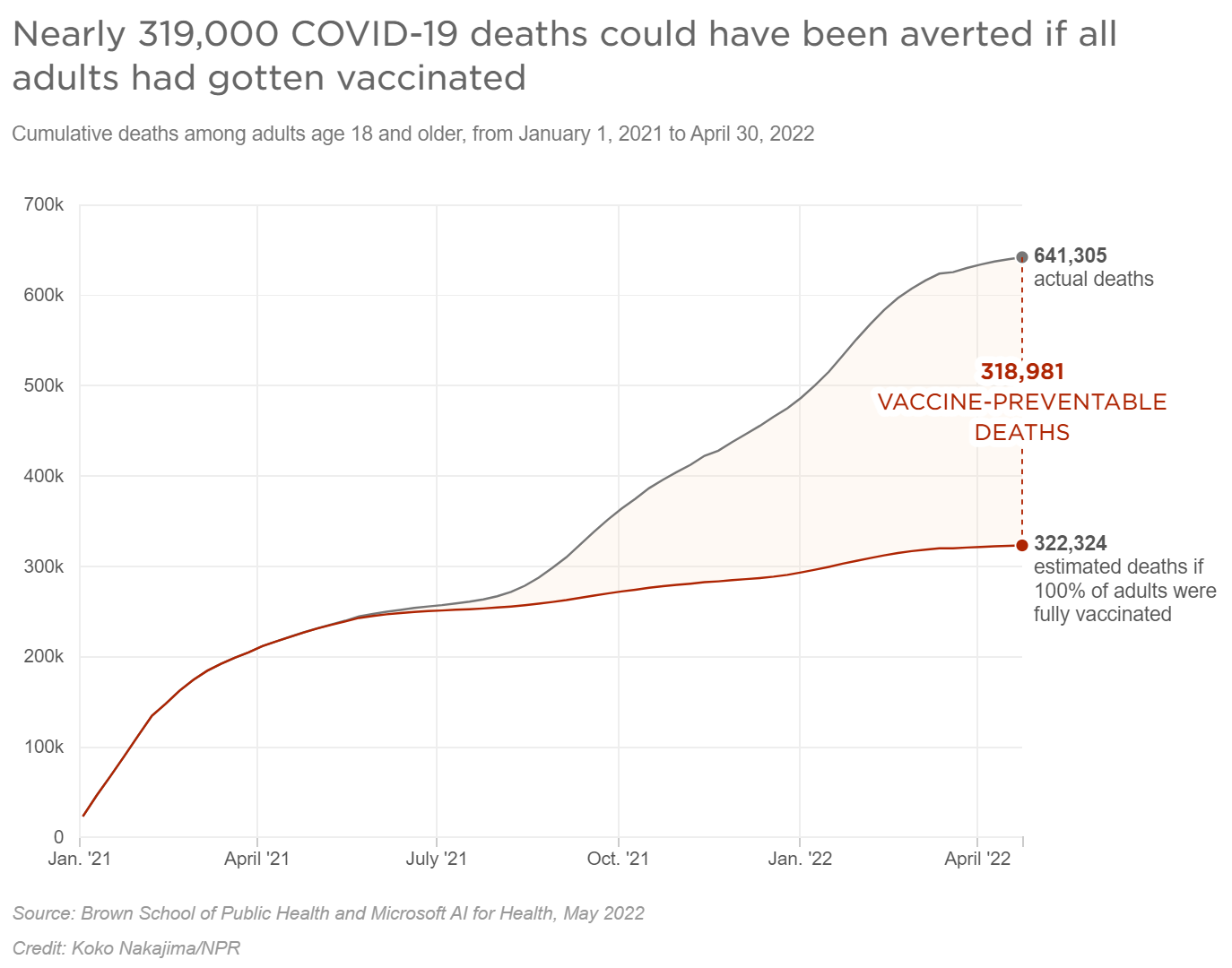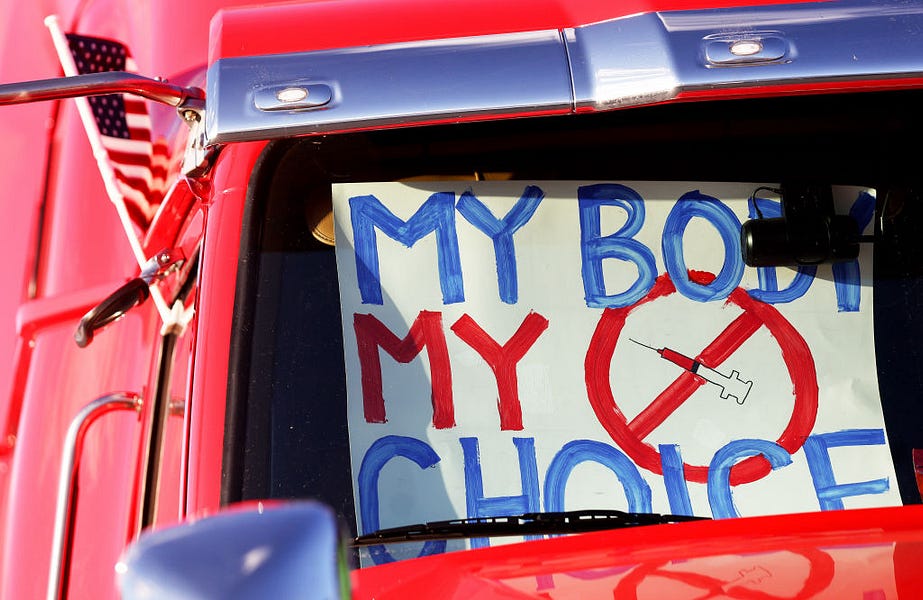When I left the full-time practice of law and landed at National Review, my friends and colleagues Jay Nordlinger and Jonah Goldberg both independently gave me exactly the same advice. My job, they said, was to write what I believe to be true. It’s not to please a crowd or build a coalition.
Their advice was good and true, and in the years since I’ve tried my best to live up that ideal. I’m going to try again today with the full awareness that I’m not sure anyone is going to like what I say, right or left. But here’s what’s on my mind and heart.
Two days after Roe has been overturned, I’m far more conflicted than I ever imagined I’d be. Writing in The Atlantic on Friday, I described my attitude as joy in my heart tempered by disquiet in my spirit. Since I wrote that piece, that disquiet has only grown, and I think I know why.
I’ve been a pro-life advocate and activist for more than 30 years. I started in college by trying to change my Christian college’s policies to remove any penalty for unwed parenting. Young single moms should not be suspended from school. I then moved on to Harvard Law School where I started a pro-life student group with two dear friends and endured the considerable blowback of that hostile era on campus.
As a lawyer I represented pro-life groups for decades. I helped raise tens of millions of dollars for pro-life legal advocacy (I lost count at about $40 million). Shortly after I returned home from Iraq, I led a litigation group that publicly promised to defend any pro-life student in America for free if they faced a challenge to their constitutional rights, and we kept that promise.
Through it all, I was guided by two burning convictions—that Roe represented a grave moral and constitutional wrong and that I belonged to a national Christian community that loved its fellow citizens, believed in a holistic ethic of life, and was ready, willing, and able to rise to the challenge of creating a truly pro-life culture.
I believe only one of those things today.
My feelings about Roe are unchanged. As a constitutional matter, I agree with Justice Alito. Simply put, the Constitution cannot be fairly read to protect a right to abortion. There is quite obviously no enumerated right to abortion, and there is no historic grounds for believing that abortion should be deemed an unenumerated right. As I’ve written before, “The Court’s job is not to determine which rights we should possess but rather which rights we do possess.”
The idea that Roe was a revolutionary and destabilizing decision is not unique to the right. Ruth Bader Ginsburg herself once declared Roe “breathtaking” and warned that “Doctrinal limbs too swiftly shaped, experience teaches, may prove unstable.” She even wondered if Roe should have been more narrowly decided. Suppose the court decided to strike down only the Texas law at issue and not “displace virtually every state law then in force” Would the country face the same level of controversy?
Moreover there was always something particularly morally noxious about Roe’s reasoning. The Supreme Court removed abortion questions almost entirely from the democratic process, created one of the most extreme abortion rights regimes in the world, and deprived an entire class of people—unborn children—of any meaningful legal status. It did all those things through the 14th Amendment, one of the Civil War amendments.
The Civil War amendments were intended to correct deep flaws in the original Constitution that permitted states to systematically deprive individuals of their most basic human rights. At long last the Supreme Court could and would begin the process of extending the blessings of liberty to every American.
Well, to everyone but the unborn. For those precious people, the court declared that one of the key Civil War amendments was the instrument of their doom. The ruling wasn’t just constitutionally unsound, it was morally perverse. It utterly contradicted not just the letter of the 14th Amendment, but its animating moral essence as well.
Now Roe is gone. Good. We should rejoice at its demise.
But that’s not the end of the story. Not by a long shot. The two sides of the great American divide are now staring at each other and asking, “Now what?” The answer from pro-life America should be clear and resounding—the commitment to life carries with it a commitment to love, to care for the most vulnerable members of society, both mother and child.
But life and love are countercultural on too many parts of the right. In a time of hate and death, too many members of pro-life America are contributing to both phenomena. Is that too much to say? Is that too strong? I don’t think so.
In deep-red America, a wave of performative and punitive legislation is sweeping the land. In the abortion context, bounty-hunting laws in Texas, Idaho, and Oklahoma turn citizens against each other, incentivizing lawsuits even by people who haven’t been harmed by abortion. The pro-life movement, once solidly against prosecuting women who obtain abortions, is now split by an “abolitionist” wing that would not only impose criminal penalties on mothers, it even calls into questions legal protections for the life of the mother when a pregnancy is physically perilous.
The culture of political engagement centers around animosity. Church and family life is being transformed, congregation by congregation, household by household, by argument and division. The Dobbs ruling has landed in the midst of a sick culture, and the pro-life right is helping make it sick.
Writing in the New York Times, Ross Douthat rightly cautioned that “the vicissitudes of politics and its own compromises have linked the anti-abortion cause to various toxic forces on the right — some libertine and hyperindividualist, others simply hostile to synthesis, conciliation and majoritarian politics.”
That’s true, but it doesn’t go far enough. The vicissitudes of politics haven’t just linked the anti-abortion cause to various toxic forces on the right, they’ve transformed parts of the anti-abortion movement, making many of its members as toxic as their “libertine and hyperindividualist” allies.
At this point I want to add a huge caveat. At the center of the grassroots pro-life movement are some of the finest people I’ve ever met in my life. Crisis pregnancy centers, for example, are staffed by people who have hearts full of love, and when the radical left firebombs those clinics, they’re firebombing the buildings and institutions that are giving an immense amount of hope to young women in distress.
But sadly those institutions often operate on shoestring budgets. So many times they lack volunteers.
In the meantime, the Republican branch of the American church is adopting the political culture of the secular right. With a few notable exceptions, it not only didn’t resist the hatred and fury of the MAGA movement, it was the MAGA movement. And this is the culture that’s going to lead the effort to heal our nation, love the marginalized, and ask young women to face an uncertain future and endure a physical ordeal for the sake of sacrificial love?
This brings me to a vital last point. It is a simple truth that when it comes to moral leadership, actions speak so much louder than words. That’s a truth that’s been instilled in me since my youth. Walk your talk.
And yet. Consider the last two years.
We are slowly but surely emerging from a deadly pandemic. It’s not that the disease has disappeared. Far from it. But the combination of mutations, vaccinations, and prior infections is making it far less deadly. Yet at every point in the pandemic, it was pro-life red America that loudly declared its bodily autonomy, disproportionately shunned even the slight inconvenience of a mask before the vaccine, and then disproportionately rejected the vaccine when it miraculously appeared mere months after the pandemic began.
Parts of pro-life red America moved from skepticism to outright defiance. “How dare you tell me what to do. This is my decision between me and my doctor.” They trafficked in pseudo-science and bizarre conspiracy theories. The cost was staggering. It was horrifying. Look at this chart, from the Brown School of Public Health:

When I bring this up, people get furious. The conventional wisdom on the right has hardened into adamantium. If you condemn the anti-vaxx movement, then you’re an elitist. You hate anti-vaxxers. How dare you question their decisions? Everyone knows the real cultural tragedy of the pandemic was the way the terrible blue states imposed extended lockdowns and kept schools closed too long.
To criticize the anti-vaxx movement isn’t to hate or look down on its members any more than criticizing the pro-choice movement means hating or looking down on its members. Strong disagreement isn’t hatred, even when you believe the contrary position contains grave moral flaws.
I also can agree that blue state restrictions went too far, but I cannot get that staggering death toll out of my head. And that’s not a random 319,000 people, it’s 319,000 of our most vulnerable citizens. The elderly. The infirm. People with immune disorders.
In the face of that wave of death, a wave of death created by a staggering amount of Christian fear, disinformation, and defiance—millions of the same people who created that culture now loudly demand that other people sacrifice for life.
It’s time for another caveat. When we talk about national movements, we invariably talk about generalities. Huge movements are made up of millions of people, and many of those millions have gone above and beyond the call of duty. They’ve spent their lives sacrificing for others, in ways large and small. They resist the hatred of the times, and even though I might disagree with some of their votes, they put me to shame in their service for others.
But the sad reality remains: When American culture burned with partisan hatred, all too many institutions of the American church fueled the fire. They fuel the fire to this day. There is a cost to this combat, and that cost is born in our ability to reach out to people outside our tribe and to have people believe us when we say that we care for them, that we want to see them flourish, and that we love their families—both red and blue.
One more thing …
I’ve got two podcasts to promote today. The Dobbs decision came down on Friday morning, 50 minutes before we normally tape the Good Faith podcast. Curtis and I talked about the end of Roe and hosted the wonderful Rachel Ferguson to talk about her fascinating book, Black Liberation Through the Marketplace, a classical liberal response to racial injustice in America.
Then, moments later, Sarah and I launched an emergency episode of Advisory Opinions. If you’re interested in the faith aspects of the decision, listen to Good Faith. If you want to know more about the law, listen to Advisory Opinions. Or, better yet, head over to the Dispatch homepage and listen to them both!
One last thing …
This song, from my favorite new album of 2022, is both beautiful and humbling. This one of those humbling songs, one that reminds us that we should always be aware that we’re going to be wrong, and we’re going to need grace. Thankfully that grace is real:







Please note that we at The Dispatch hold ourselves, our work, and our commenters to a higher standard than other places on the internet. We welcome comments that foster genuine debate or discussion—including comments critical of us or our work—but responses that include ad hominem attacks on fellow Dispatch members or are intended to stoke fear and anger may be moderated.
With your membership, you only have the ability to comment on The Morning Dispatch articles. Consider upgrading to join the conversation everywhere.